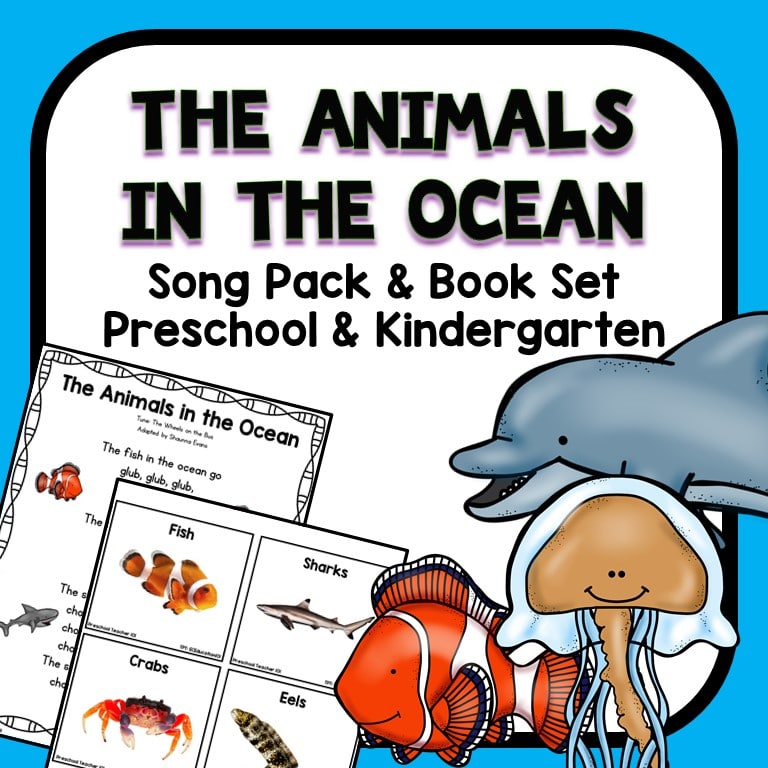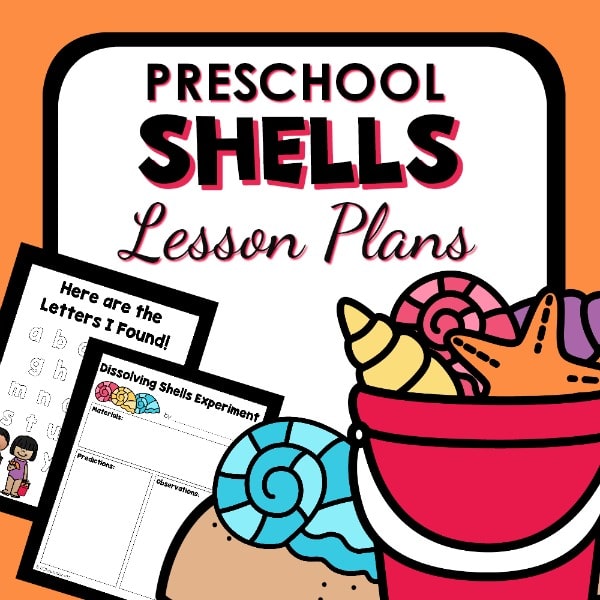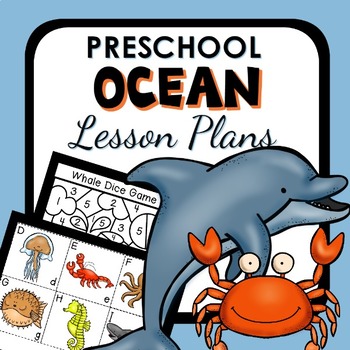Shell Painting Process Art in Preschool
Shell painting is simple, but fun, process art for the kids to do over the summer. Be sure to add this vibrant art idea to your preschool ocean theme.
Are you following Fun-A-Day’s Ocean Theme Pinterest board?
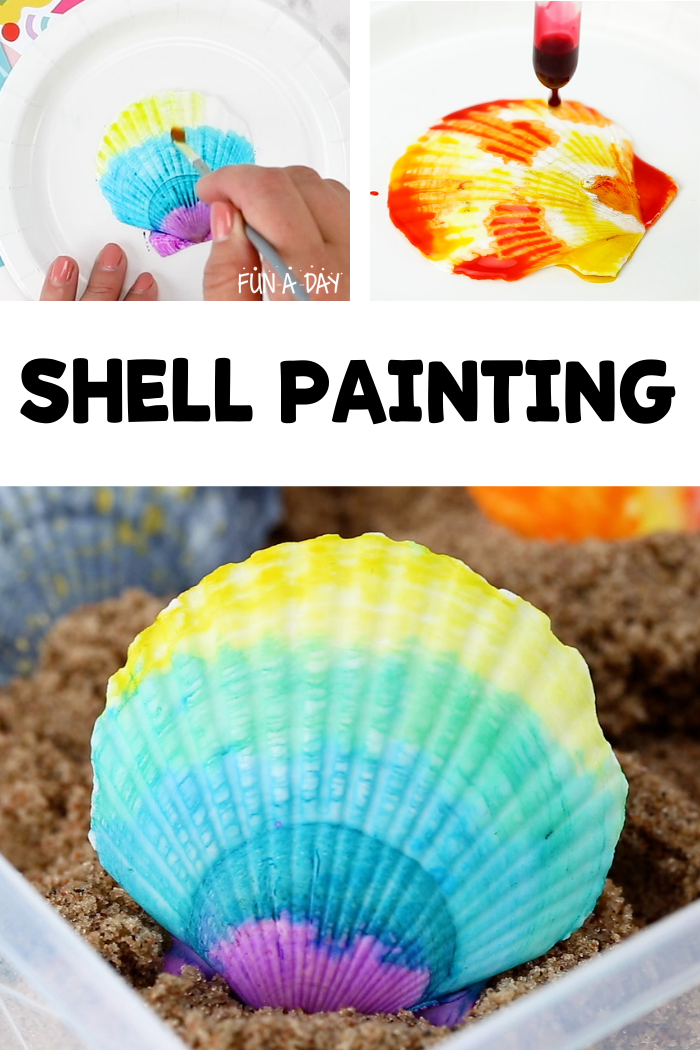
Related: Ocean Sensory Bottle
Shell Painting
When painting shells in previous years, I’ve used tempera or acrylic paints. Those paints worked well, but I decided to change it up during the 2013-2014 school year.
The reason? Because I wanted to incorporate more liquid watercolors into our art activities! Doing so really let the kids explore the concept in more ways than we’d done in the past.
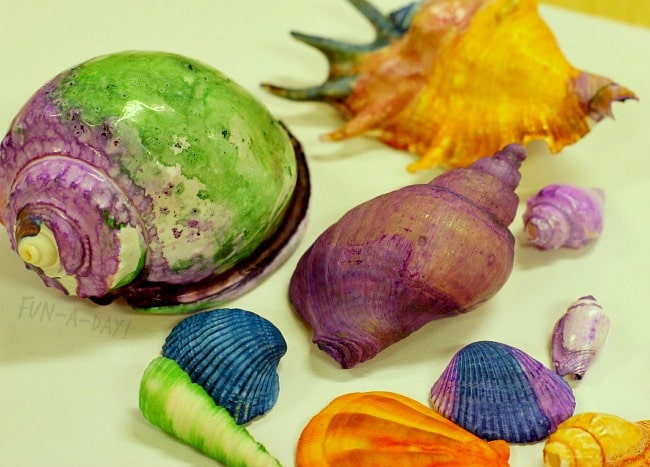
Materials We Used for Painting Shells
Before I jump into what we did, I wanted to make sure to share the items we used. One of my favorite things about this ocean art activity is that you don’t need much.
And that’s it!
When it comes to the shells you use, the choices are endless. You can use shells from beach trips (as long as you thoroughly clean them) or craft shells. We had a variety on-hand the first time, which allowed us to compare and contrast. But we’ve also had years where we had only one type of shell. Trust me, the kids do not mind.
Oh, and you’ll also want to have a surface to work on. But that’s more dependent on your own preferences. Kids can paint on paper plates, art trays, reusable tablecloths, etc.
How to Paint Seashells
As I mentioned earlier, there are multiple ways to paint shells with kids. For this particular activity, we chose two simple shell painting techniques. There’s absolutely nothing fancy about these techniques, but they leave a lot of room for the kids to experiment and explore. I love watching how the children take an activity and just run with it!
Painting Shells with Paintbrushes
To start off with, let the children use paintbrushes to color their seashells. Place some liquid watercolors in shallow trays or cups, put some paintbrushes nearby, and let the kids do their thing.
Depending on the needs of your students, you can use larger or smaller brushes. The smaller brushes allow for more detailed painting and work on the kids’ fine motor skills even more. But some children prefer larger, wider brushes. That’s okay, too!
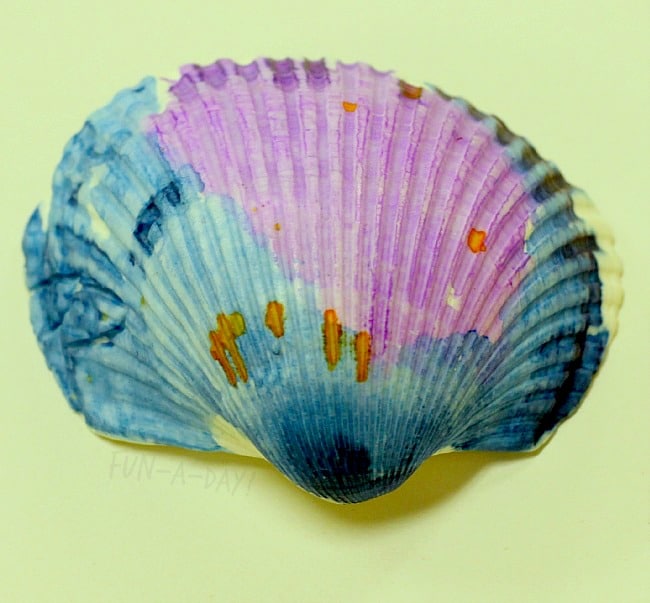
Related: Process Art for Kids
Shell Drip Painting
Our other shell painting technique wasn’t as detail-oriented. This one was even more freeform, and it let the kids really explore color mixing. Children also work on their fine motor skills and can experiment with gravity with the drip method.

Start off with liquid watercolors in small cups or shallow dishes. Then add eye droppers! You can use the chunkier droppers or the smaller, finer droppers. If you have both, why not place them all out. The children can use the droppers they prefer, or experiment with how the painting differs with each.
Learning & Fun with Painted Shells
No matter which method you choose, the kids are going to have a blast! You’ll definitely end up with so many shells drying around your classroom.
Bonus: your students are learning along the way! Here are some of the concepts explored during this shell painting activity:
- Colors and color theory
- Fine motor skills
- Descriptive vocabulary
- Exploration of textures
- Visual discrimination
- The concept of depth
- Liquid absorption
My students and I had such fun seeing how the watercolors affected different types of shells. The very first time we did this, we used both matte and shiny shells. Some had ridges, while others were very smooth. There were store-bought shells mixed in with hand-found shells. So this really gave us different “canvases” to paint on.
The ridged shells were the most interesting to watch because of how the paint flowed down the ridges. The children seemed amazed by the rivulets of watercolors on the shells.
- “Look! The paint’s running away!”
- “What about if we add even more paint to it!?”
- “Hey, look! It’s darker blue on those lines of the shell!”

Related: Coffee Filter Art Flowers
The shiny shells didn’t hold the paint as well as the matte shells, but that was to be expected. The kids and I still liked painting the shiny shells, and the shells still turned out fine.
Have you ever tried shell painting with your students? I highly recommend it! At this point, I have lost count of the number of shells we’ve painted over the years.
What to Do with Painted Shells?
As I said earlier, you might end up with a ton of gorgeous painted shells. If so, you might be wondering what to do with them once your shell painting fun is done. Don’t worry, I’ve got you covered!
Here are a few different ideas:
First, consider adding the shells to a sensory bin. Of course, you’ll need to make sure you have the kids’ permission to do this. But if you’re anything like me, you had fun painting some shells too. So use the ones you painted or any extras you have. The sensory bin can be something as simple as kinetic sand or homemade play sand.
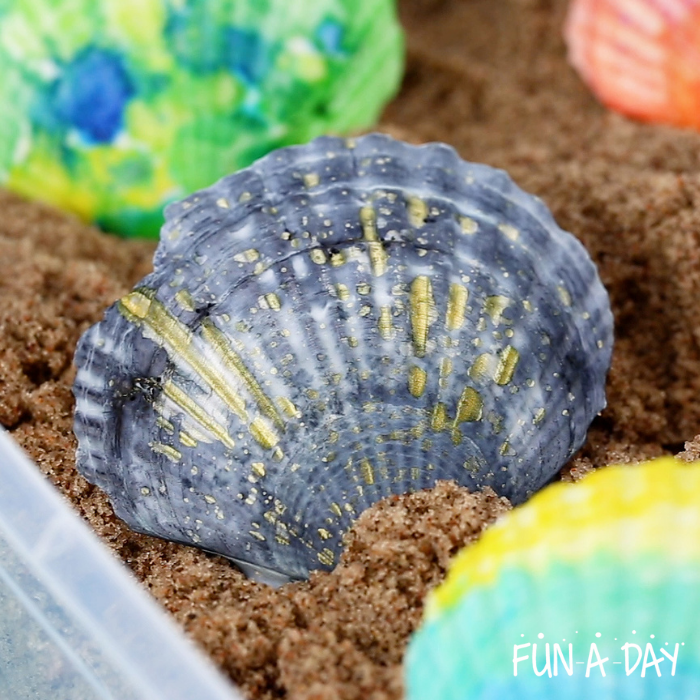
You can also use the shells to make a three-dimensional shell craft with the kids. We did this and ended up with some beautiful shell sculptures!
Use the shells to create a beach small world. Place sand and blue water beads in large bin or tray. Add the shells, along with some small ocean animal toys. Or maybe even some mermaids! Then be prepared for some imaginative storytelling from your students.
The painted shells would also make great math manipulatives. The kids can pair them with numbers, placing the correct number of shells by each written number. Or make some silly connect-the dots preschool number games.
Even More Fun Painting Shells
Once I get going, I like to give you as much information as possible! So of course I had to find even more shell painting ideas:
Rainbow Sea Shells from The Educators’ Spin On It explore a way to dye your shells.
Seashell Painting Art from Fantastic Fun and Learning pairs a book with an ocean art activity.
Sea Shell Art from Alpha Mom lets the kids make some fun crafts with colorful shells.
Shimmery Summer Sea Shells from Family Corner shows off some super sparkly shells.
Do you have a favorite shell painting technique?
Done-for-You Preschool Resources
Planning meaningful lessons for students week after week, all while balancing other teaching responsibilities and a personal life, can be a daunting task. That’s where Preschool Teacher 101 comes in to save you time!
Preschool Teacher 101 is excited to share with you some amazing lesson plans, activity packs, and much more! We offer a wide variety of themes that are frequently used in preschool classrooms, as well as some less common (but super interesting) themes. Click on the images below to learn more about some of our ocean-themed products.
Be sure to join the mailing list for The Pack from Preschool Teacher 101 today! You can grab a free set of lesson plans there AND you’ll be the first to know when our enrollment is opened next.
Originally posted May 2014. Updated with a video and additional images.
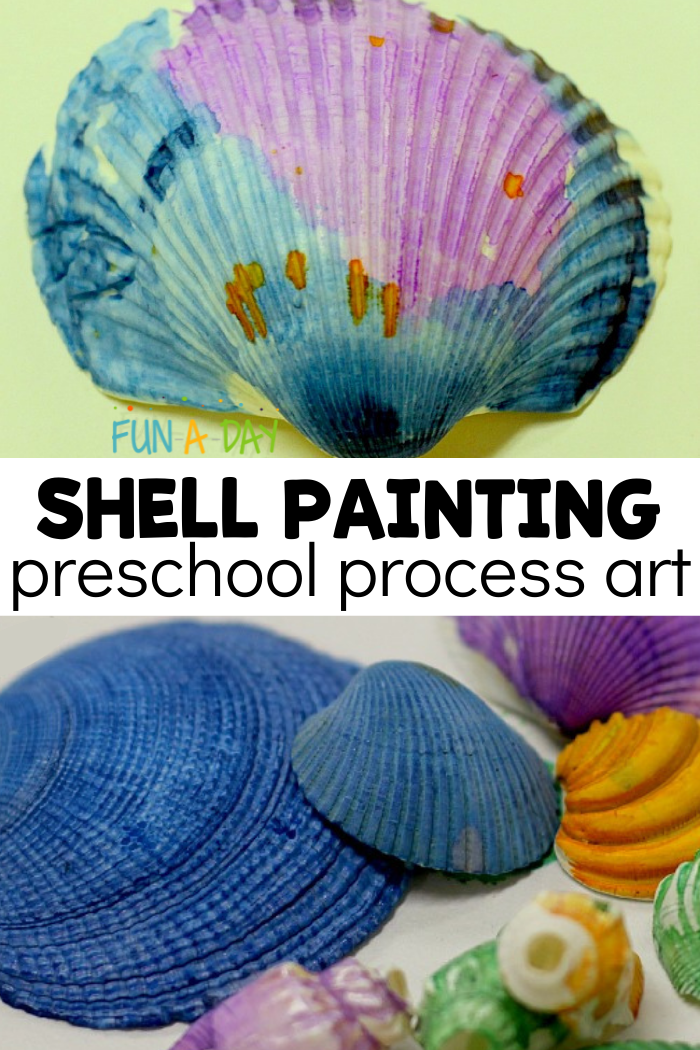
The post Shell Painting Process Art in Preschool appeared first on Fun-A-Day!.

